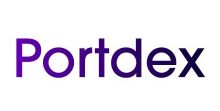Asset Tokenisation -Regulatory Update
The regulatory landscape surrounding asset tokenization is rapidly evolving, with different jurisdictions taking varying approaches
There are two main approaches to regulating tokenized assets:
-
Security token approach: This approach classifies tokenized assets as securities, which means they are subject to the same regulations as traditional securities like stocks and bonds. This approach is often taken in jurisdictions with well-established securities laws.
-
Commodity token approach: This approach classifies tokenized assets as commodities, which means they are subject to less stringent regulations than securities. This approach is often taken in jurisdictions with less mature securities laws
The EU is taking a cautious approach to regulating asset tokenization. In 2020, the EU’s Markets in Financial Instruments Directive (MiFID II) was amended to include tokenized assets. However, the MiFID II framework is primarily focused on traditional securities, and it is not yet clear how it will apply to tokenized assets.
In addition to MiFID II, the EU is also considering a new regulation called the Markets in Crypto-Assets (MiCA) regulation. MiCA is expected to provide a more comprehensive framework for regulating crypto-assets, including tokenized assets. However, MiCA is still in the drafting stages and is not expected to be finalized until 2024.
The UK is taking a more flexible approach to regulating asset tokenization. In 2020, the UK Financial Conduct Authority (FCA) published a guidance paper on the regulation of cryptoassets. The guidance paper states that the FCA will consider the specific characteristics of a tokenized asset when determining whether it falls under the regulatory perimeter.
The UK is also developing a new regulatory framework for cryptoassets called the Financial Markets Infrastructure Sandbox (FMIS). The FMIS will allow firms to test innovative cryptoasset products and services
